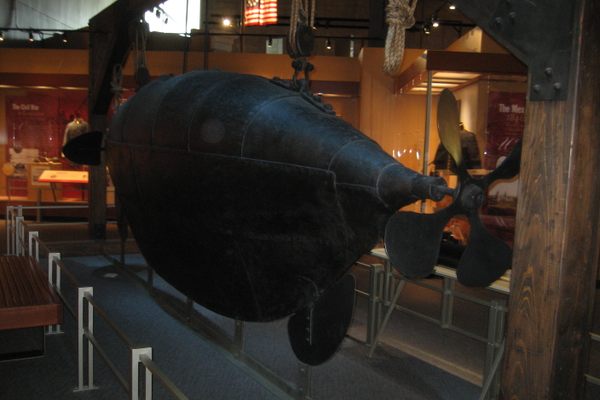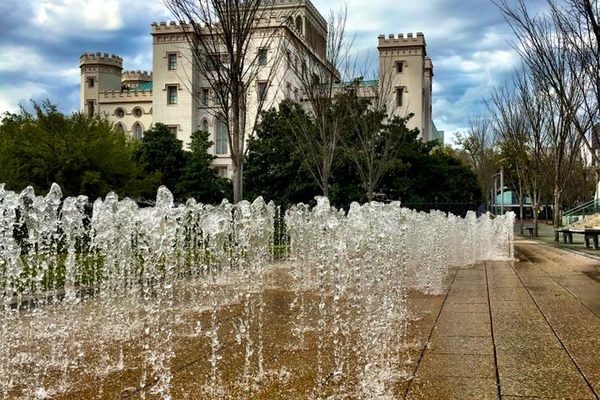LIGO Livingston Observatory
World's largest precision optical instrument used to detect Einstein's elusive gravity waves.
In 1916, Einstein’s Theory of General Relativity was published. Included in the bizarre picture that the famed physicist painted of the universe were the notions that energy and mass were equivalent, and that gravity was simply a warp in the “fabric” of space-time. Since then, there have been many successful experiments carried out to prove Einstein’s theory. For nearly a century however, scientists were unable to confirm General Relativity’s most elusive prediction: gravity waves. Until now.
In 2016, a hundred years after his prediction, the LIGO Livingston Observatory in Louisiana and its sister site in Hanford, Washington finally confirmed the existence of gravity waves.
LIGO stands for Laser Interferometer Gravitational-Wave Observatory. The first part of the name refers to the instrument employed at the site, while the second part describes the phenomenon which scientists are eager to detect. Gravity waves are analogous to the more familiar waves that surround us in daily life, such as water waves or electromagnetic waves (more commonly referred to as “light”). Their source, however, is the disturbance of a gravitational field.
Space-time is often likened to a fabric that sags in the presence of mass, such as galaxies, stars, or planets. When a massive object moves around, the gravitational field around it changes accordingly. As a result, curves in space-time propagate outward from the object, forming “gravity waves” similar to the ripples left by a bug darting across a still pond.
Most of the time, these waves are too weak to be detected with current technological means. For this reason gravity waves have been wildly difficult to directly detect. On occasion, however, violent celestial events like the collisions of stars or black holes produce disturbances so large that scientists on Earth would be able to detect them. Such is the case with the waves detected in 2016, believed to have been produced by the collision of two black holes over a billion years ago.
To measure effects as subtle as gravitational disturbances from distant sources, the LIGO observatory is equipped with an instrument of extraordinary size, precision, and stability: the mother of all interferometers. In the case of LIGO, the interferometer is a tool used to precisely measure the time it takes light to traverse each arm of the L-shaped structure. Each arm is an astonishing 2.5 miles (4 km) long, with mirrors suspended at the ends. Laser light enters the instrument from the corner of the L and is split into two beams, each of which is then allowed to bounce back and forth repeatedly in its respective arm.
If the length of one arm of the interferometer differs even slightly relative to the other, a telltale “interference pattern” will result at the junction where the beams ultimately return. Now, according to Einstein’s theory, one of the two perpendicular arms will contract in length while the other expands if a gravity wave passes through the interferometer. Consequently, LIGO scientists use a detector at the corner of the ‘L’ to record the interference created by the two beams and simply wait for a gravity wave to pass by. Which is exactly what finally occurred in 2016.
Perhaps it sounds simple enough, but the effects that LIGO hopes to measure are so slight that extreme engineering measures must be taken. In the presence of a gravity wave, the length of an interferometer arm will change only by one hundred-millionth the diameter of a hydrogen atom. That means it is necessary to shield the instrument from any other sources of disturbance such as seismic vibrations and even the gas molecules in the air. Since the laser beam is needed to travel in the straightest possible line, one of the world’s largest vacuum systems is employed to bring the air pressure down to one-trillionth of the value on Earth and minimize the amount of scattered light due to stray molecules. The resulting system is so sensitive that it can even detect the random motion of the atoms inside the mirrors themselves.
Even with such stringent precautionary measures, the risk of a false signal is high. In order to rule out erroneous measurements, an identical LIGO detector was built near Richland, Washington. This second location, known as the LIGO Hanford Observatory, operates in unison with the instrument at Livingston. In 2016 both observatories recorded the same signal at the same time signaling to scientists with certainty that they have directly detected a gravity wave passing through the Earth.
While Joseph Taylor and Russell Hulse became the first to indirectly detect gravity waves in 1974, the scientists at LIGO have had to wait to receive a verifiable signal. Now that they have been detected, the payoffs for physics and astronomy are several! LIGO researchers hope to not only test the predictions of General Relativity (such as the idea that gravity waves travel at light-speed) but also reveal a variety of exotic astronomical events.
















Follow us on Twitter to get the latest on the world's hidden wonders.
Like us on Facebook to get the latest on the world's hidden wonders.
Follow us on Twitter Like us on Facebook